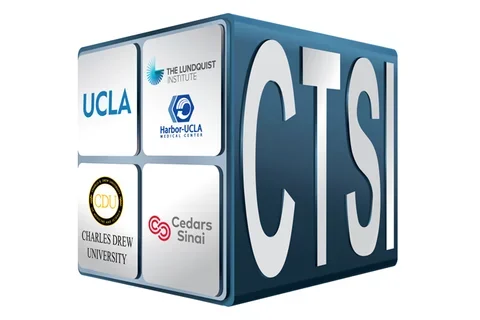KL2 scholar Claudio Scafoglio and colleagues identify mechanism that fuels cancer cell growth

A team led by CTSI KL2 scholar Claudio Scafoglio has identified a protein lung cancer cells need to use glucose, which is essential for tumor growth and survival. The finding suggests that the protein, the sodium-dependent glucose transporter 2 (SGLT2), is a novel biomarker that doctors may one day use to detect lung cancer early, when tumors are small and easier to treat.
Cancer cells require large amounts of glucose to survive and grow. Past research has established that passive glucose transporters, or GLUTs, are the primary means the body uses to deliver glucose to tumors. However, more recent studies have found that some cancers, such as prostate and pancreatic, also rely on SGLT2 to utilize glucose, which spurred the UCLA scientists to study the role of SGLT2 in lung cancer.
Finding ways to diagnose lung cancer early when it is easier to treat is imperative because it is currently the leading cause of cancer-related deaths in both men and women worldwide. Each year, more than 150,000 people in the U.S. die of lung cancer.
In Dr. Scafoglio's experiment, mice with human cancer cells were injected with radioactive tracers to hone in on the SGLT2 protein. Then scientists used positon-emission tomography (PET) imaging to measure the activity of SGLT2.
Next, they gave the mice canagliflozin, an FDA-approved diabetes drug that blocks the SGLT2 protein, reducing the cancer's glucose supply. The drug slowed the growth of early-stage lung cancer and improved survival in the mice.
The findings point to a new way of diagnosing early-stage lung cancer as well as a new way of treating the disease.
The senior author on the paper, UCLA Associate Professor David Shackelford, is Dr. Scafoglio's mentor and a former KL2 scholar. Thus, the research also demonstrates a "daisy chain" approach to translational science training, in which the KL2 program produces scientific leaders who, in turn, train new KL2 scholars.
Dr. Scafoglio, an assistant professor at UCLA, said the next step for his research would be clinical studies of SGLT2-specific PET imaging in early-stage lung cancer patients, followed by trials testing SGLT2-blocking drugs for lung cancer treatment -- and, potentially, disease prevention.
Further reading:
Read the study in Science Translational Medicine.
Read the JCCC release.
Image source:
Image caption:



